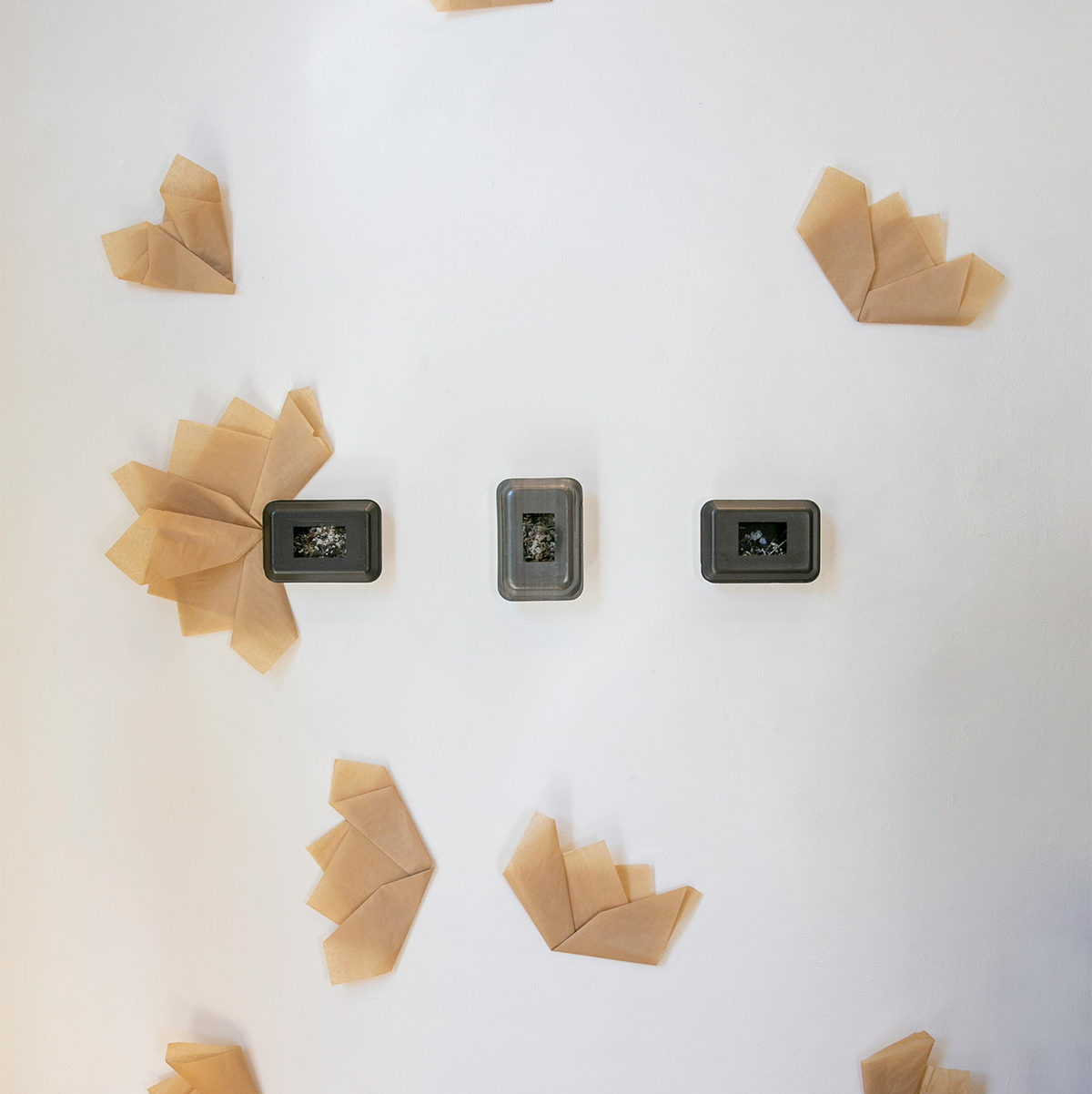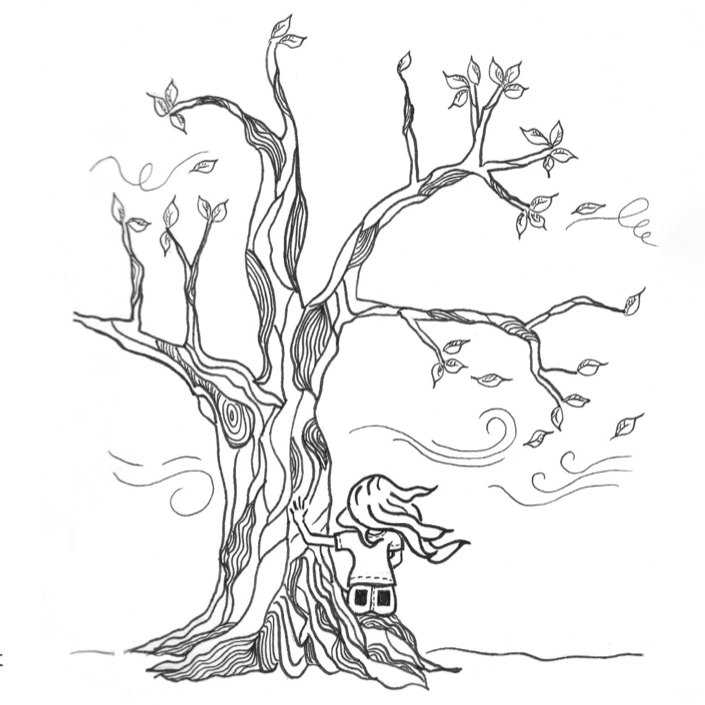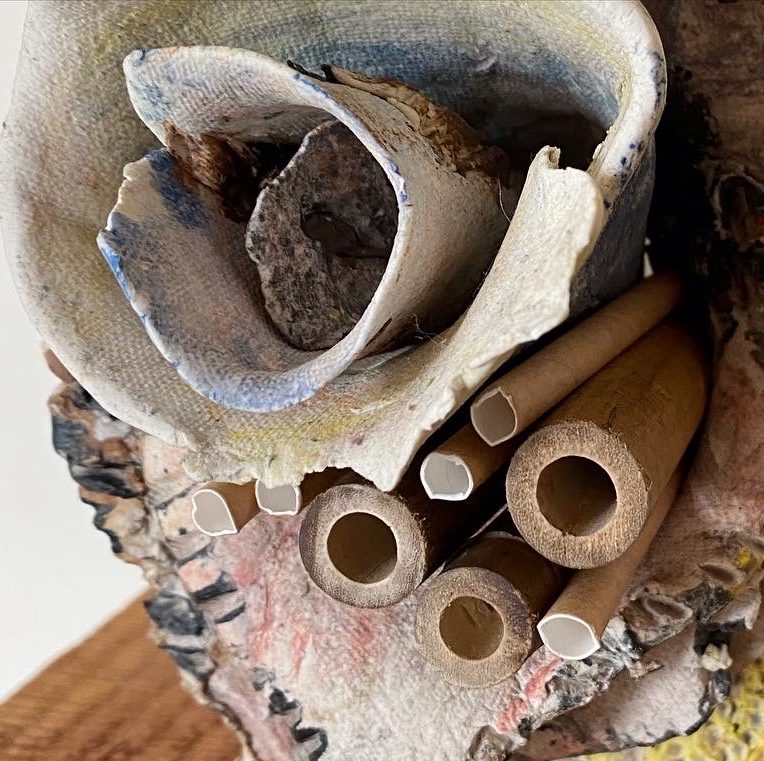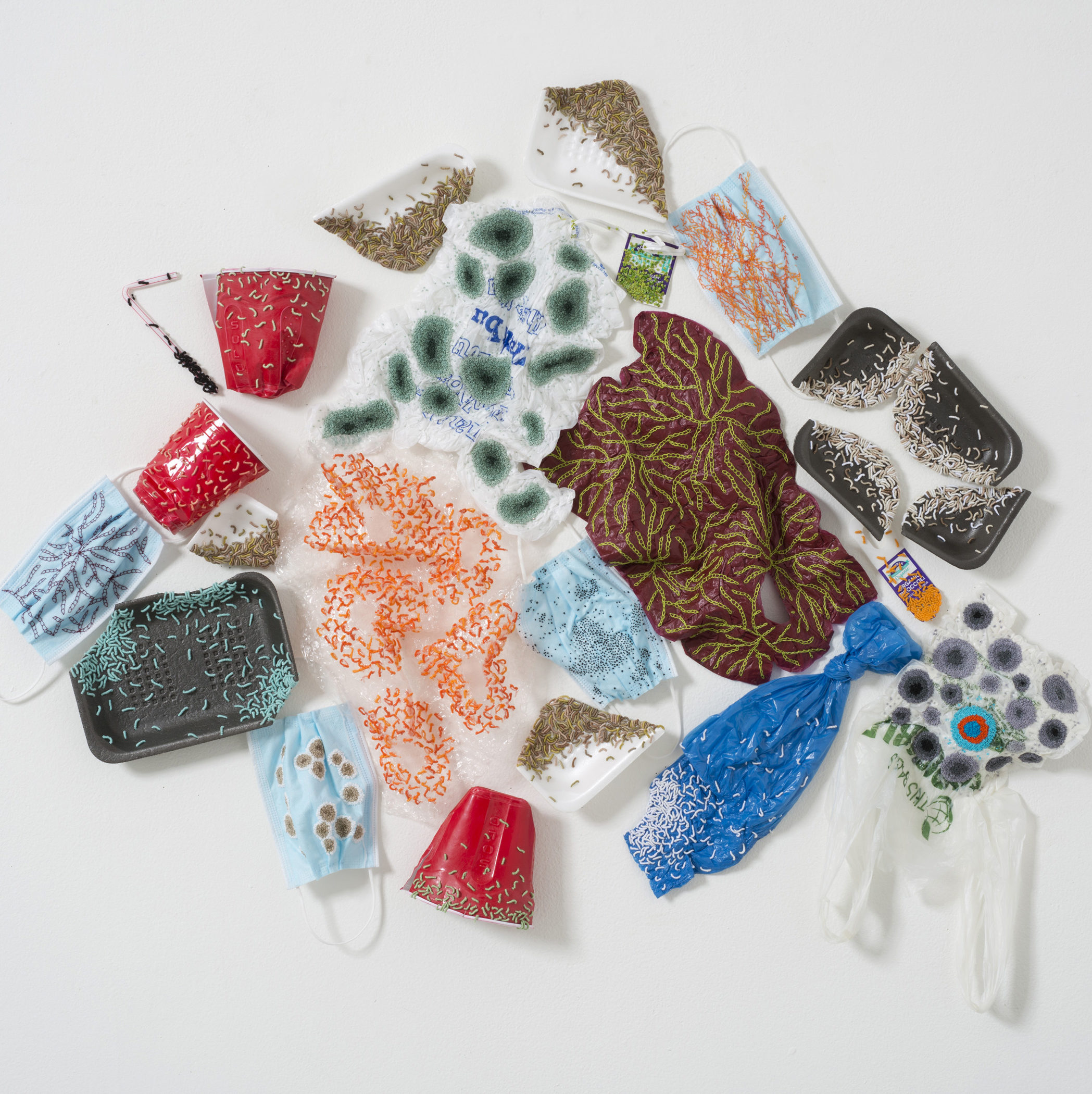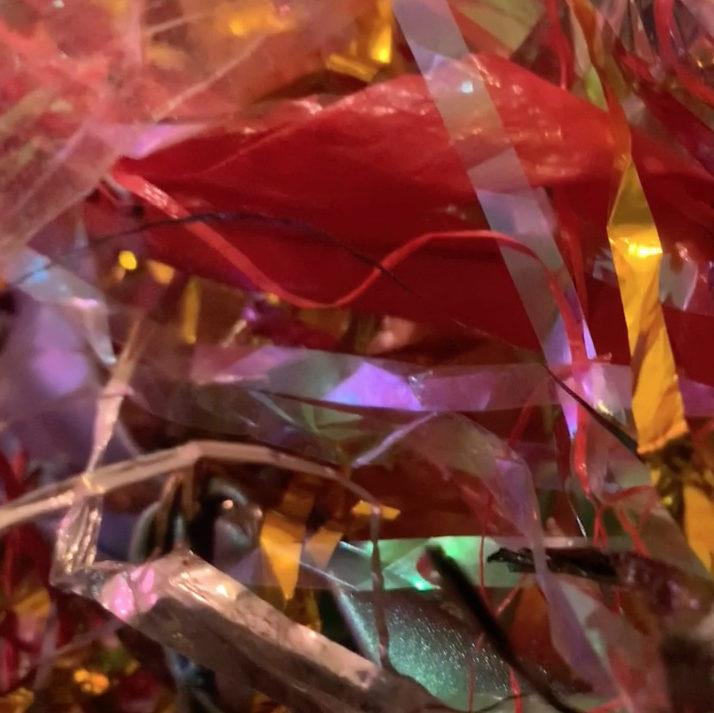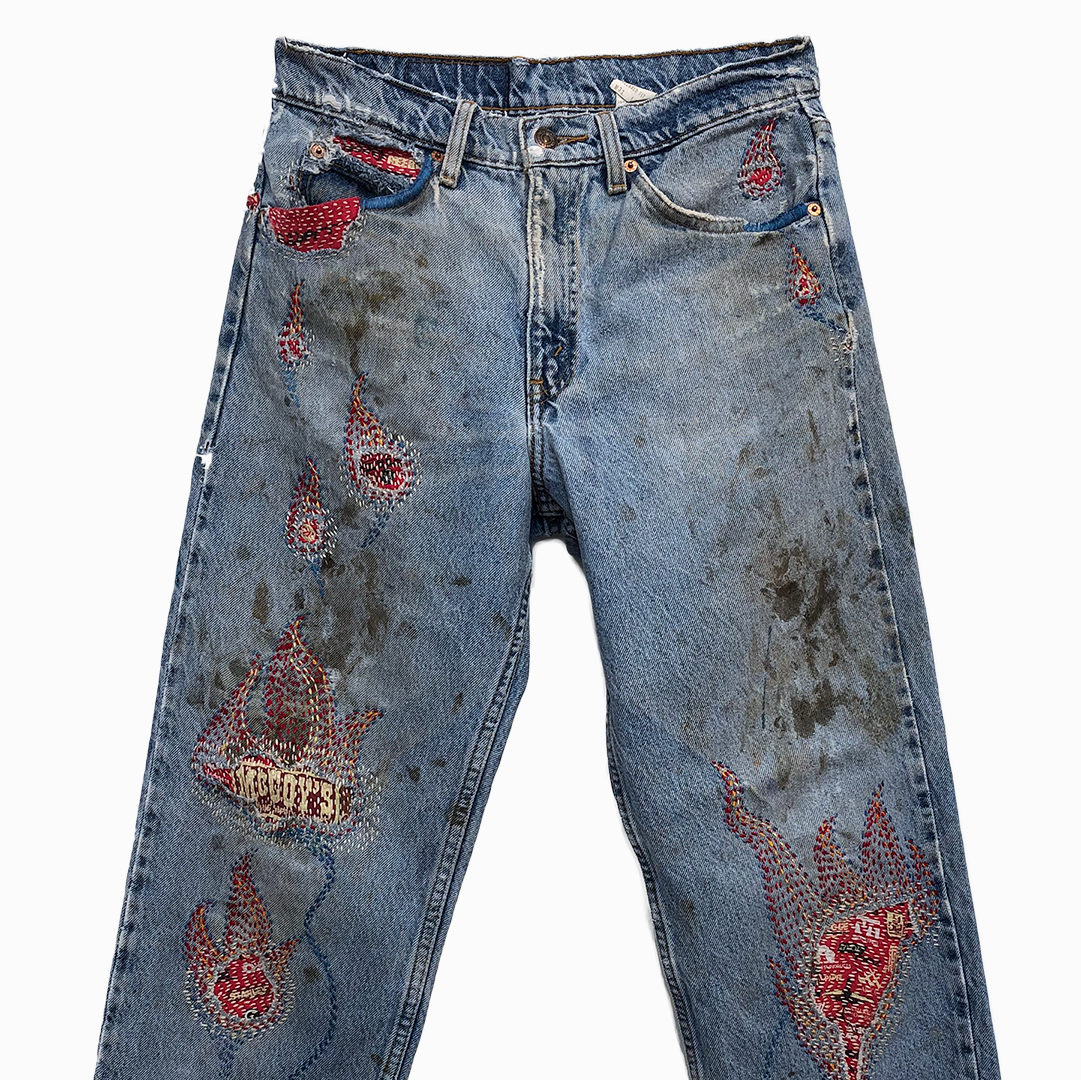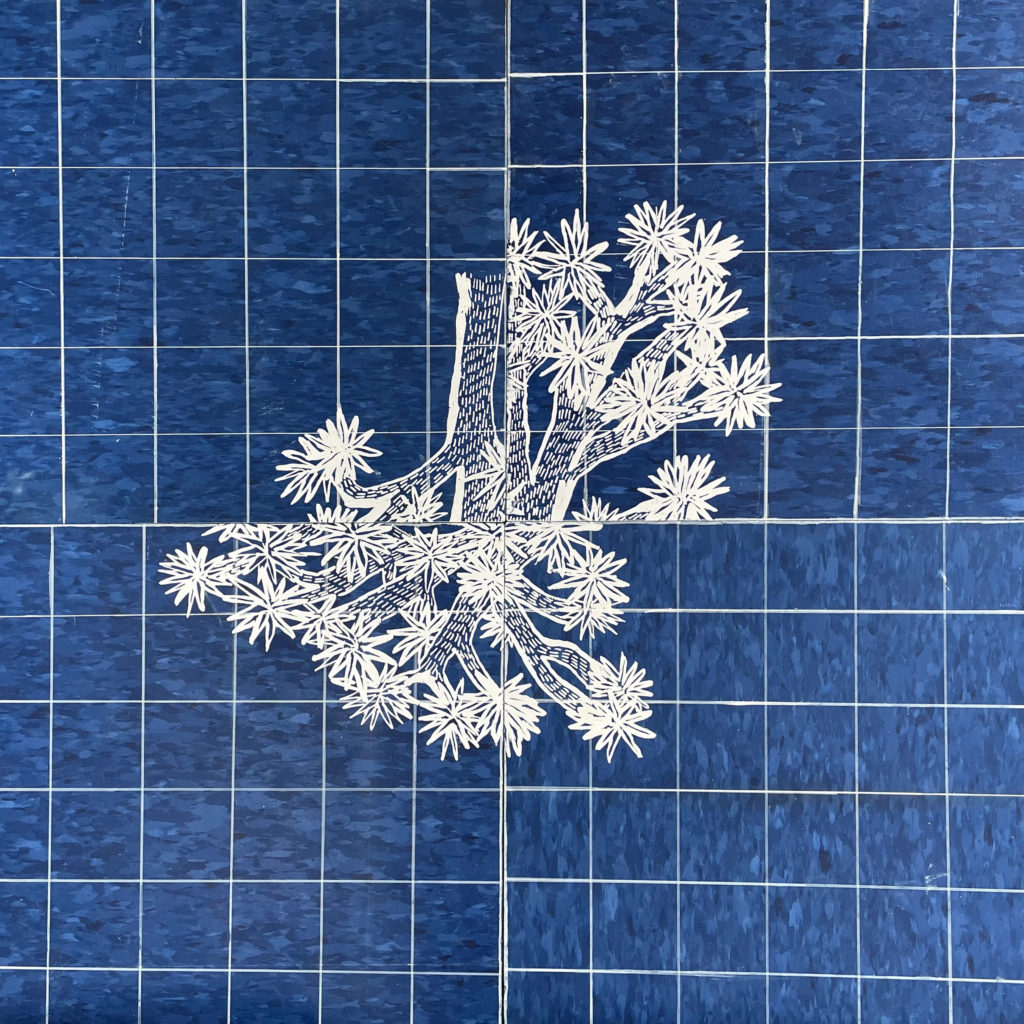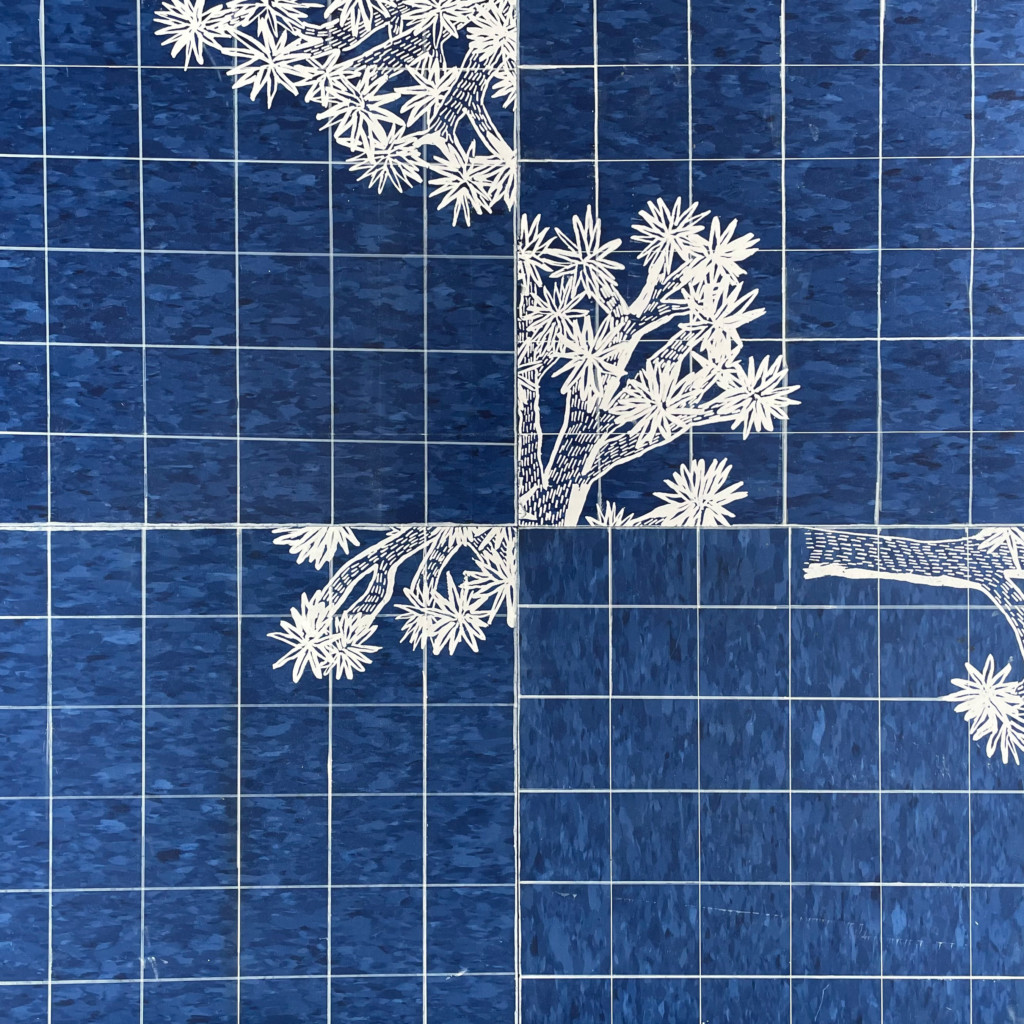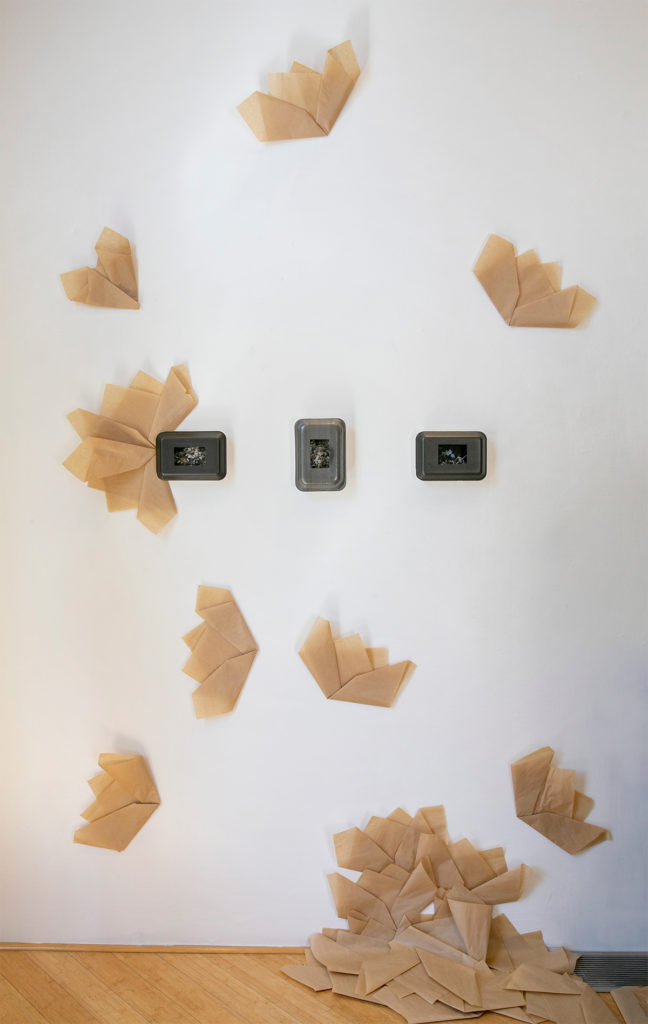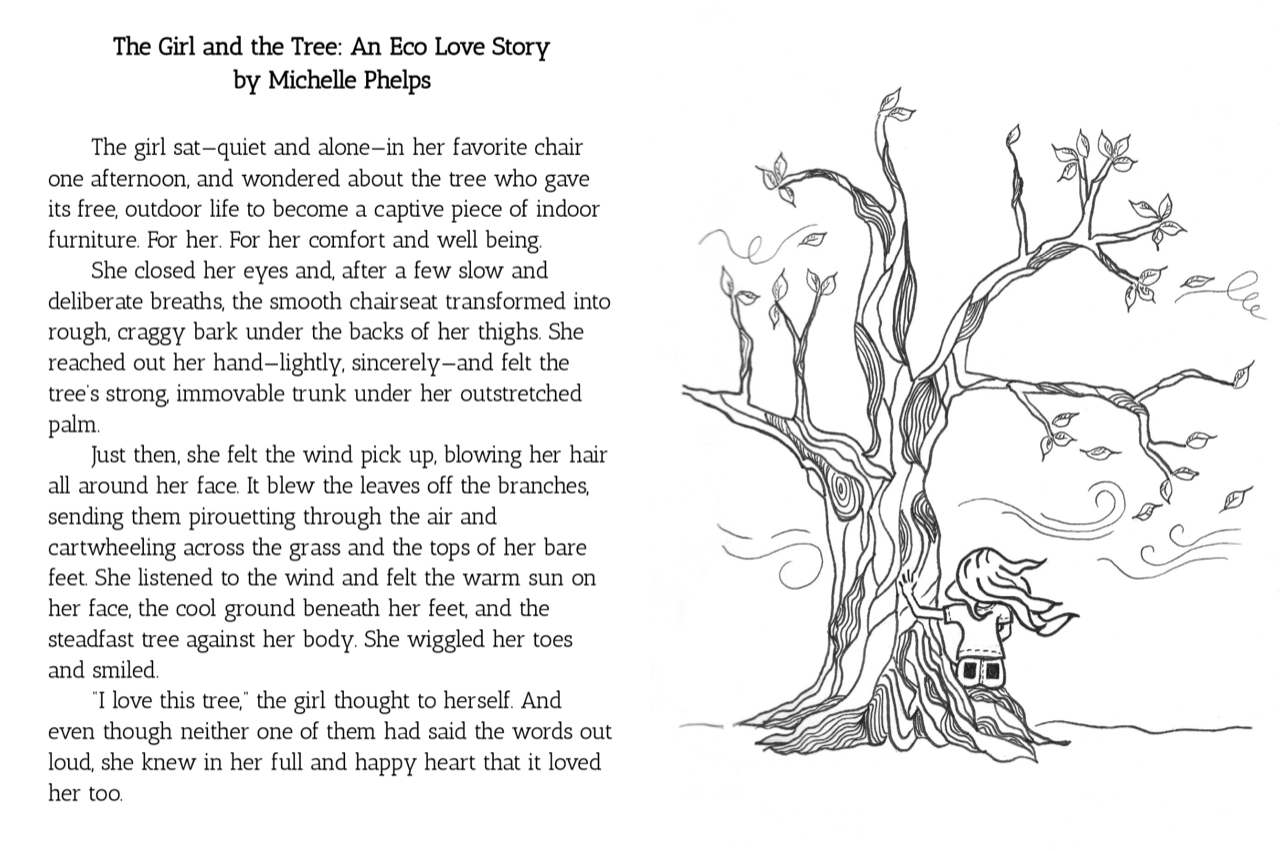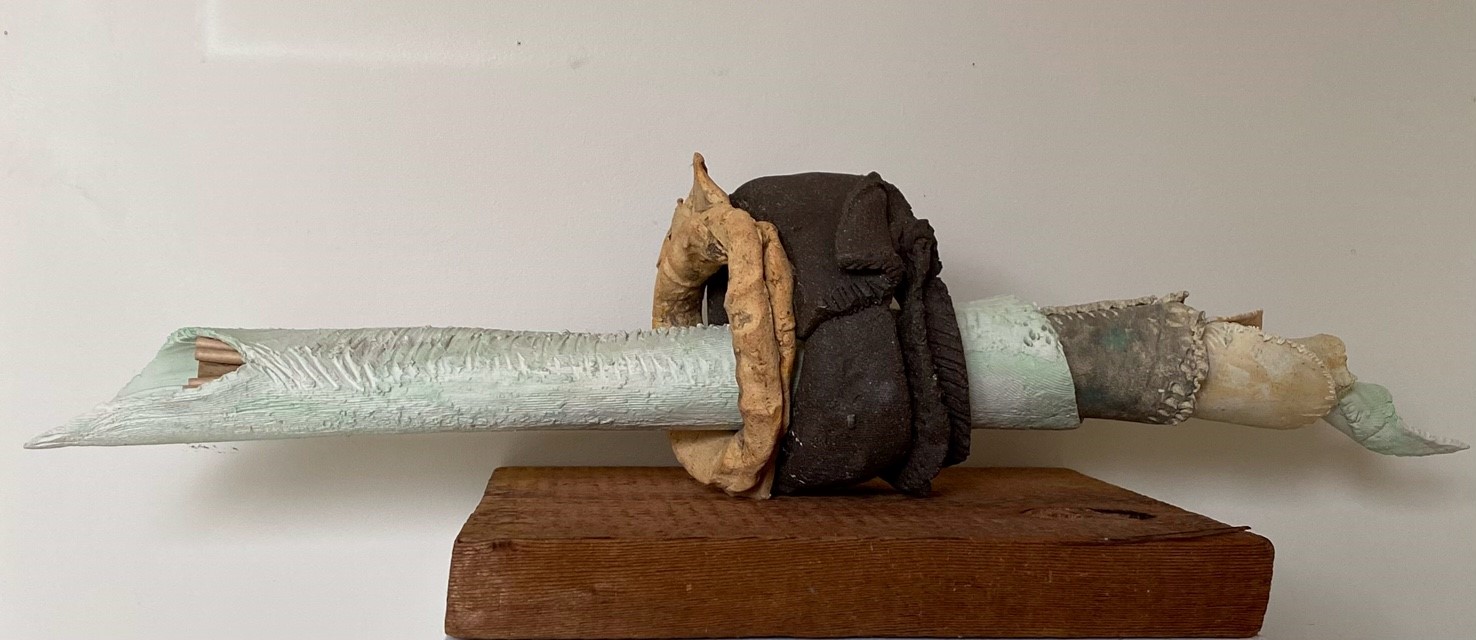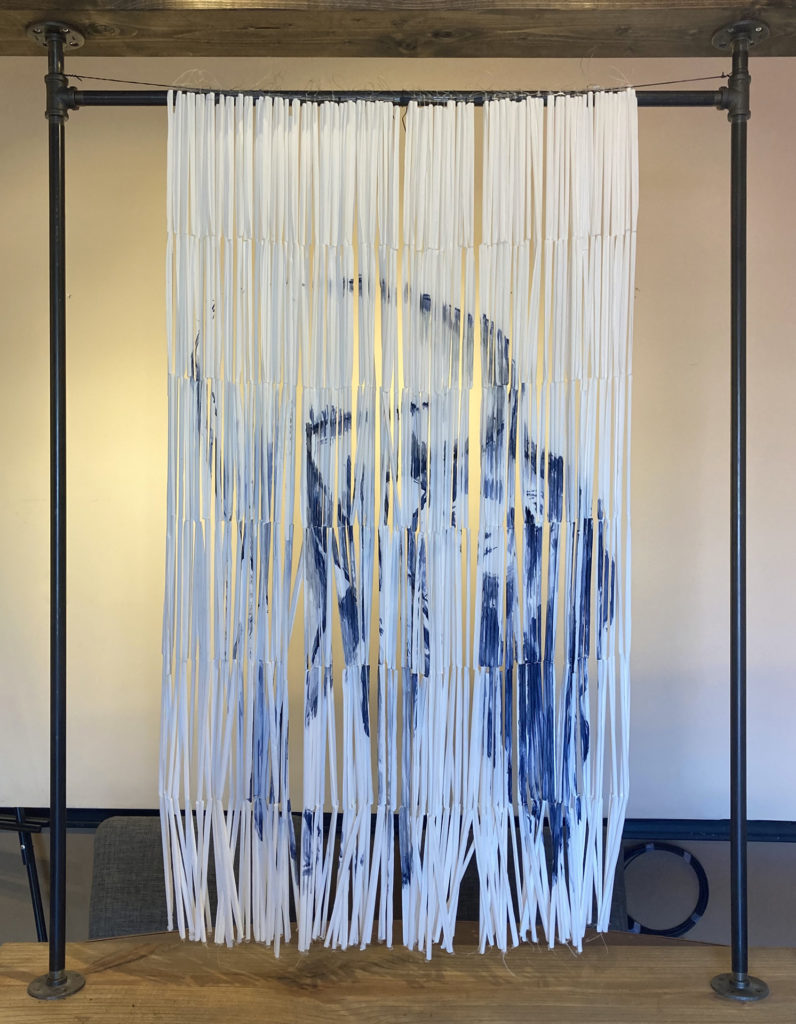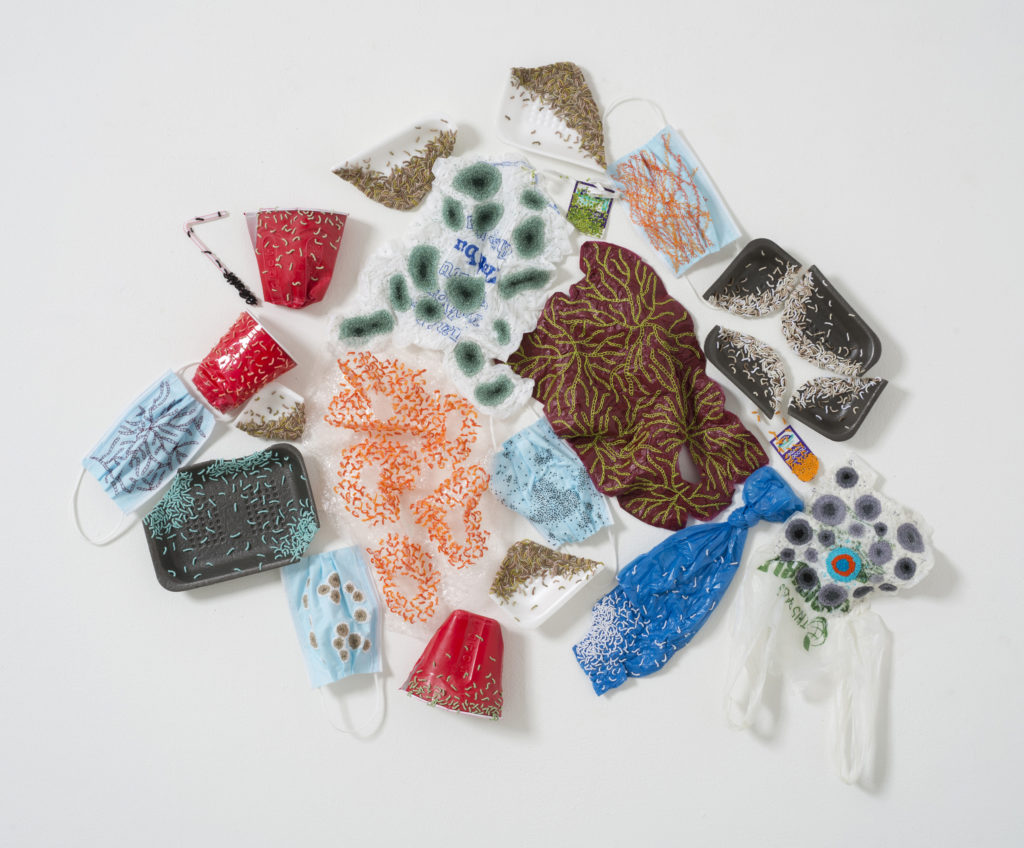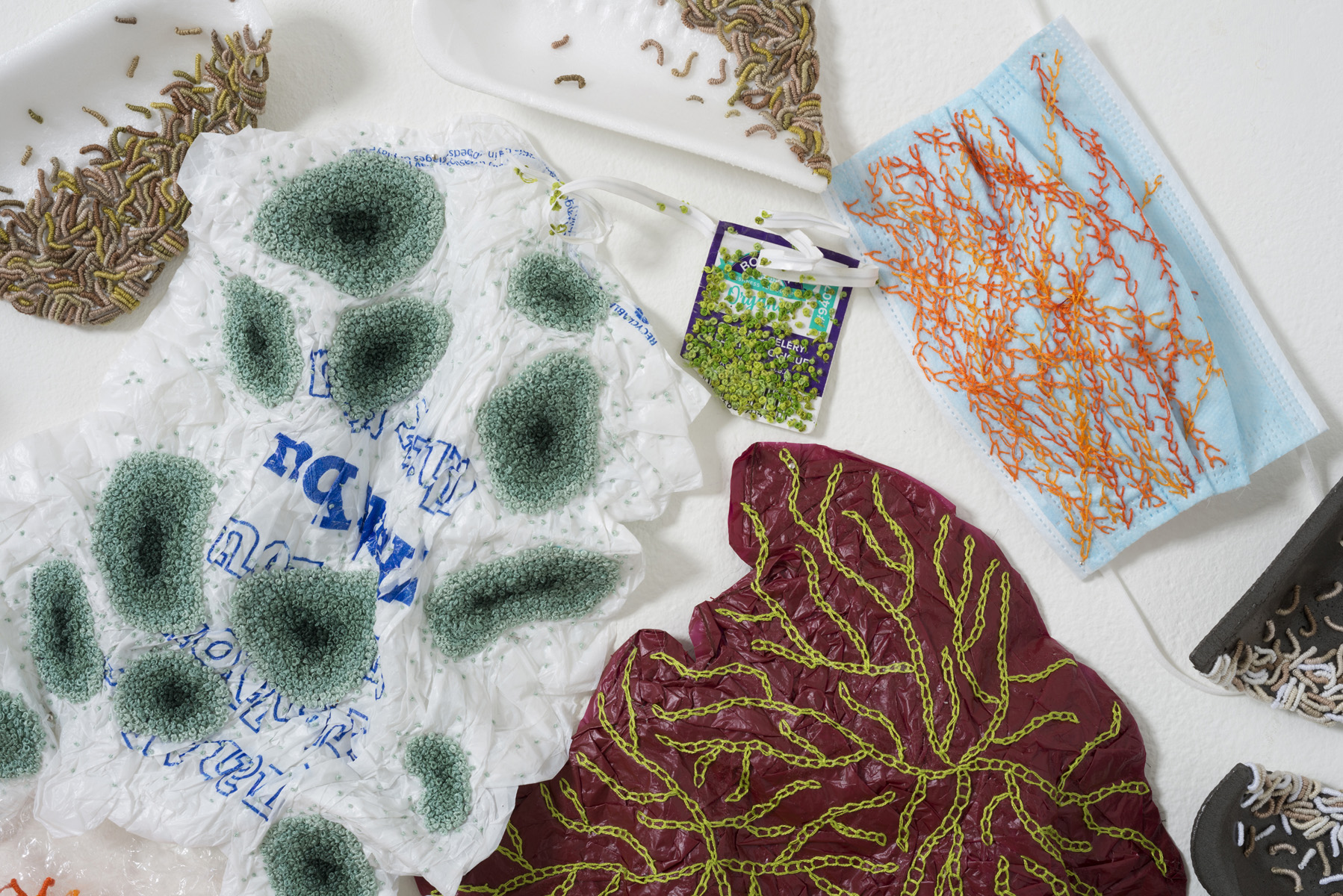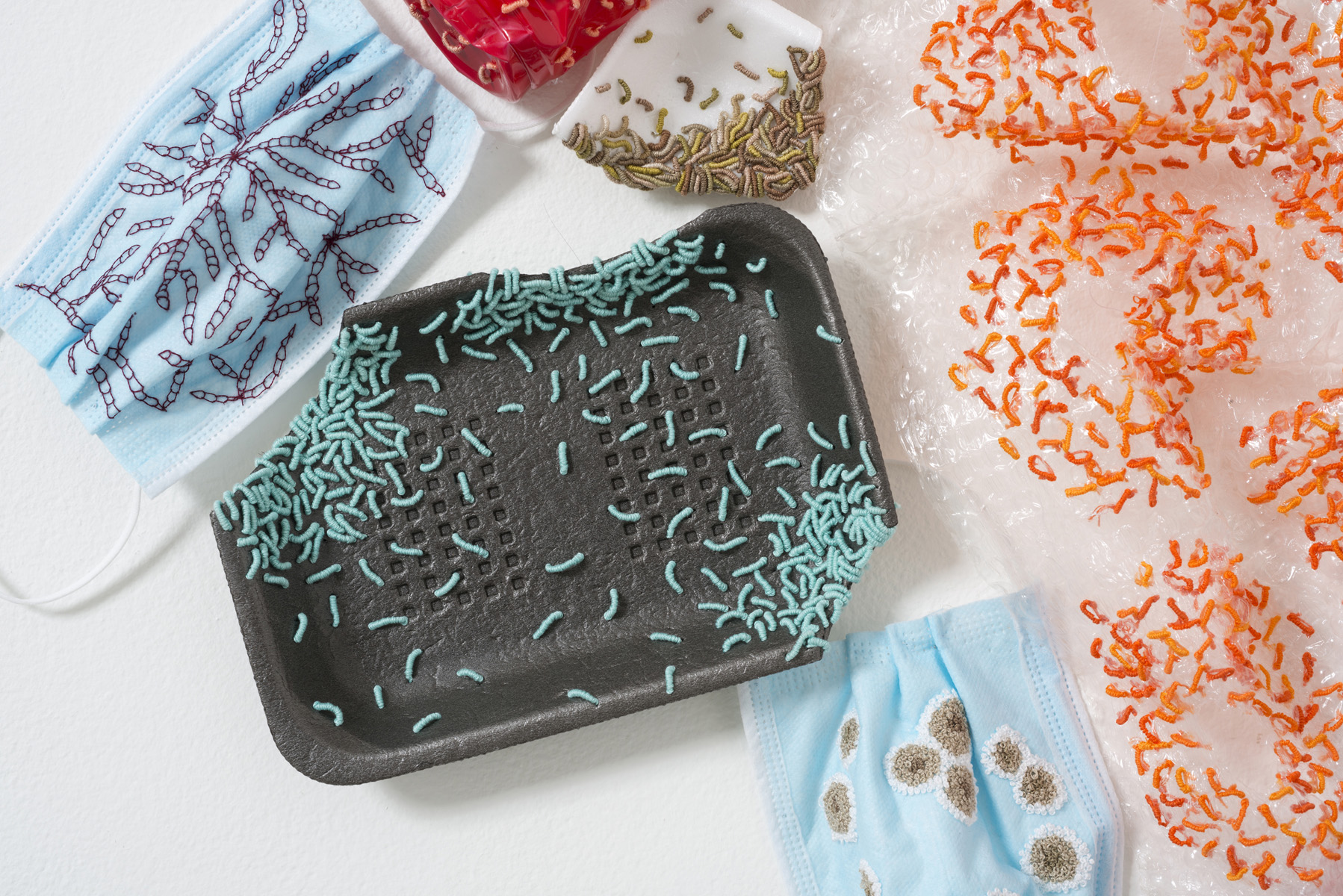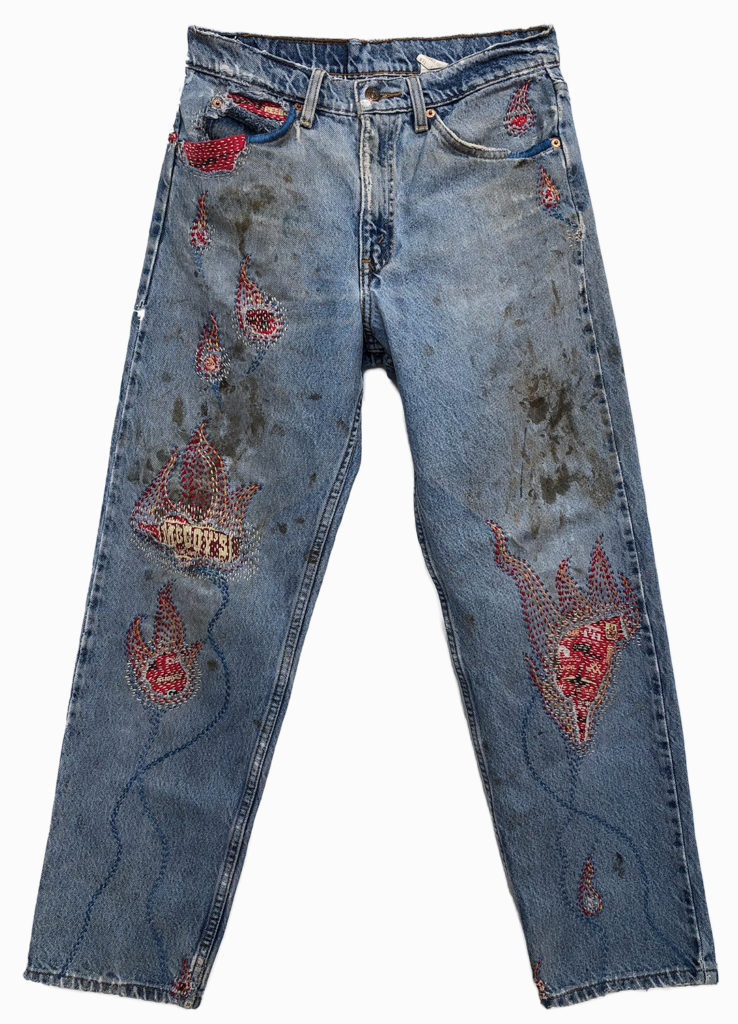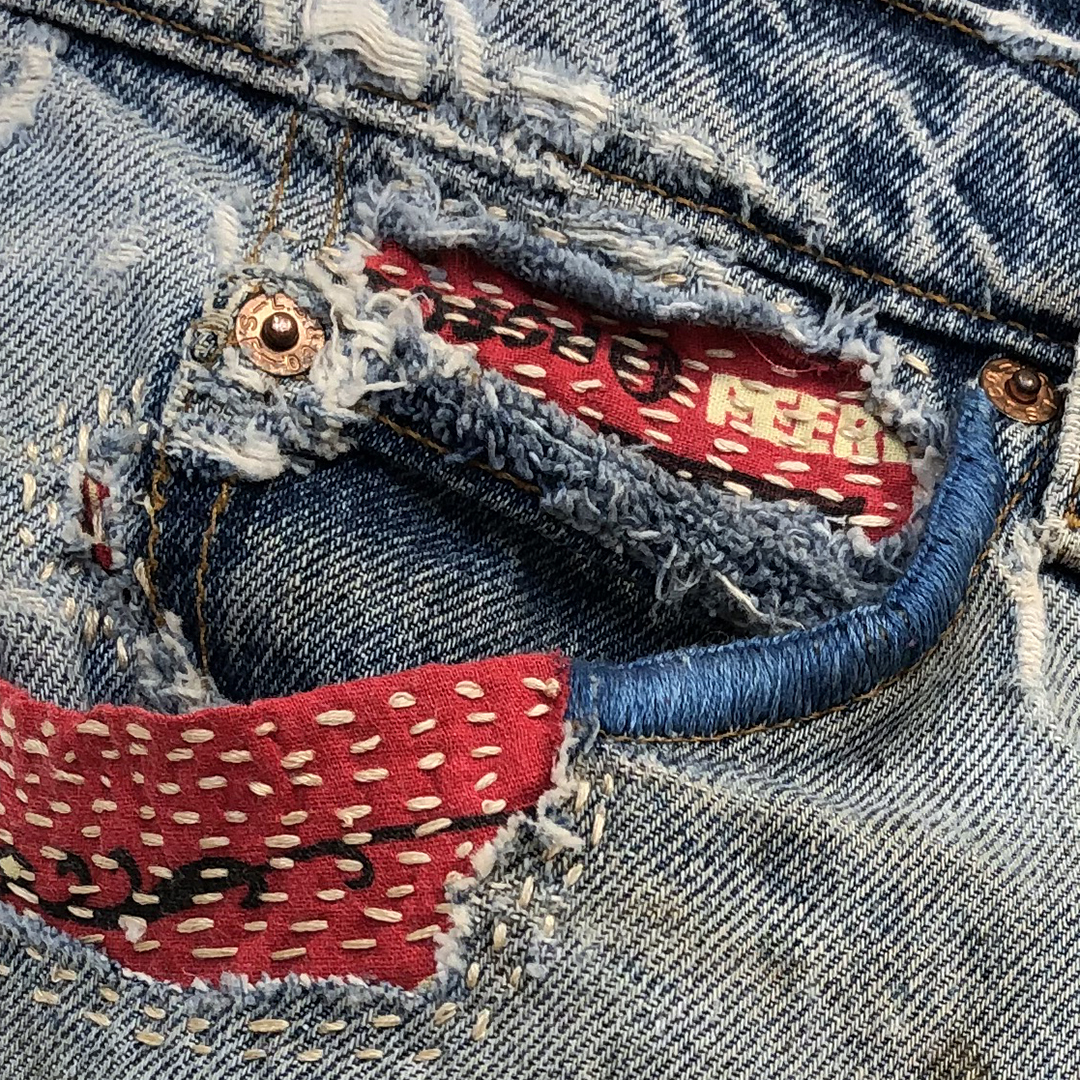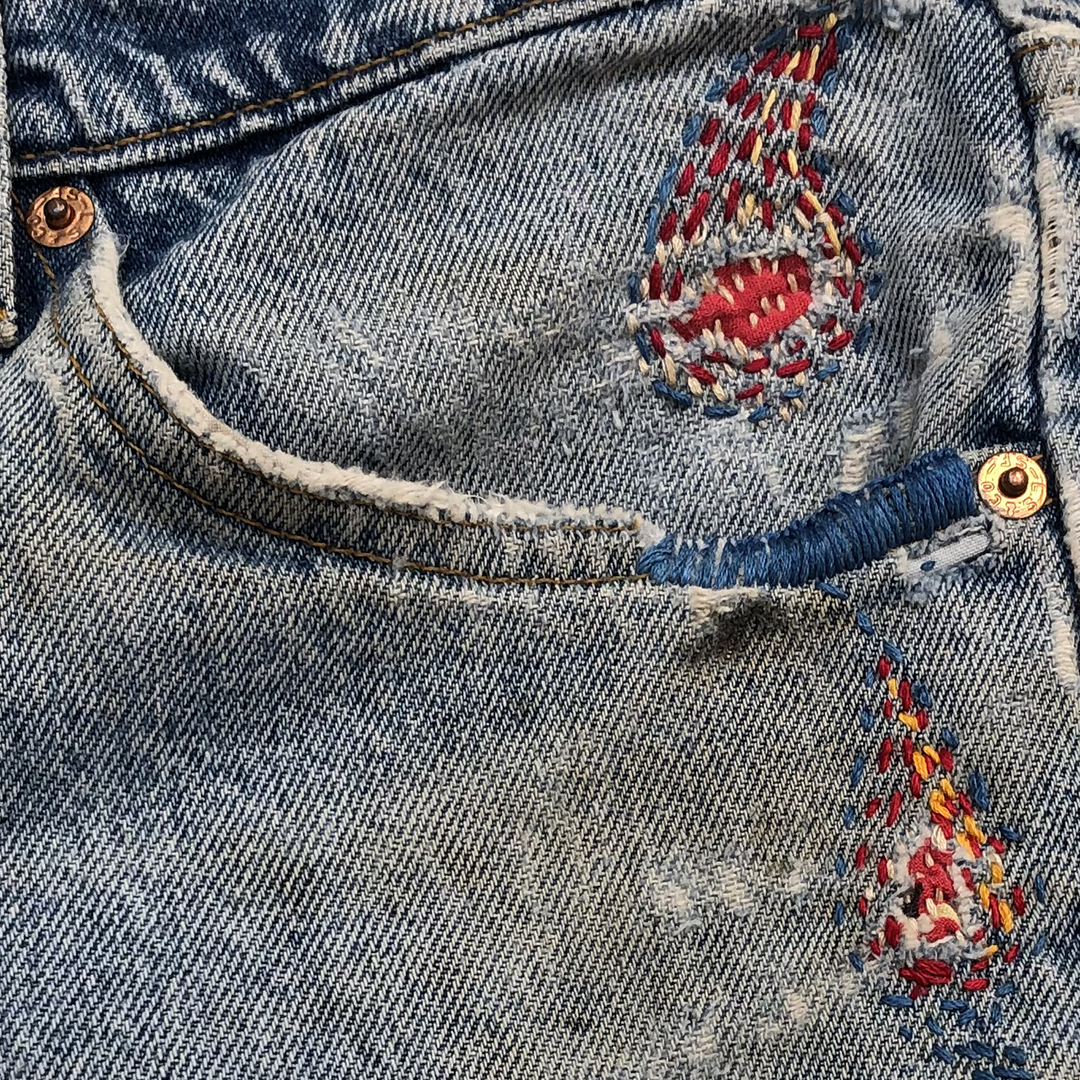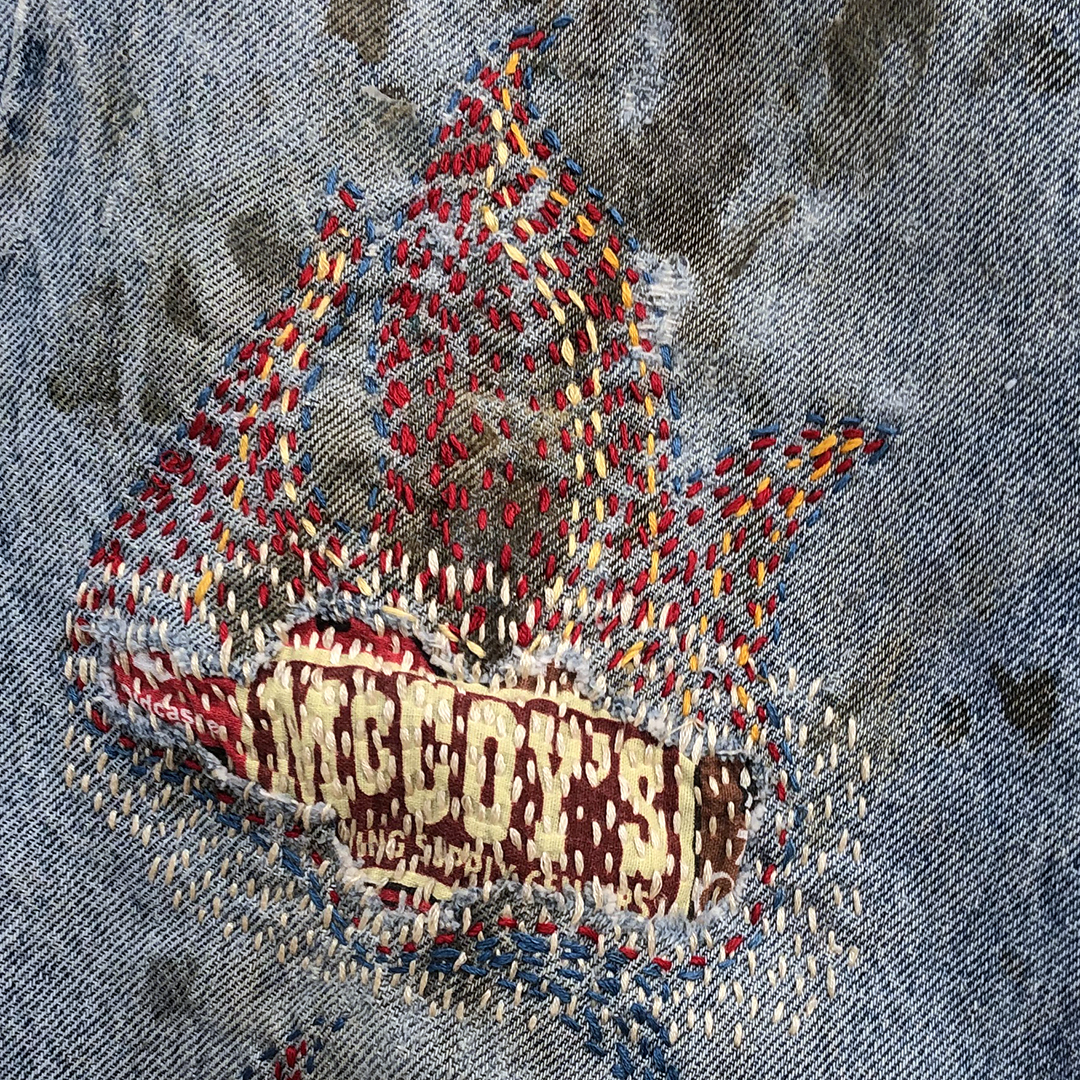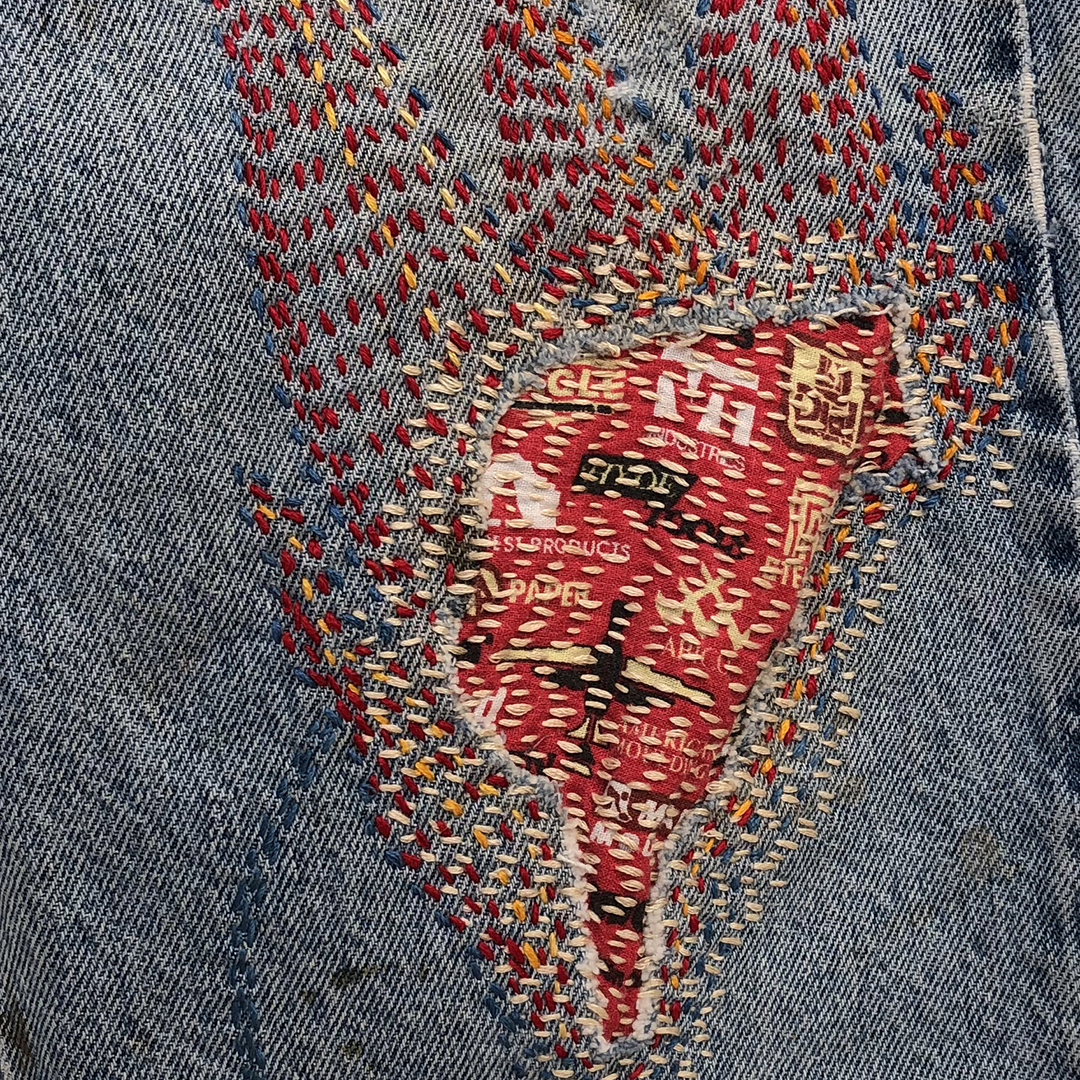Recology AIR+ Eco Art Matters
This collaboration between the Recology Artist in Residence (AIR) Program and the Laney College Eco Art Matters class, taught by former artists-in-residence Minoosh Zomorodinia and Sharon Siskin, invited students from the 2021-2022 school year to utilize class-practiced skills in a professional setting for inclusion in a virtual exhibition using a formal application process.
In creating between one and three new pieces of art for this paid project, nine students spoke to a range of environmental and social issues. Using materials scavenged from their homes and local reuse stores, work from this virtual exhibition inspires viewers to reconsider their understanding of waste and expand notions of what art is and can be.
Spring 2022
Fall 2021
Spring 2022
Ash Cable
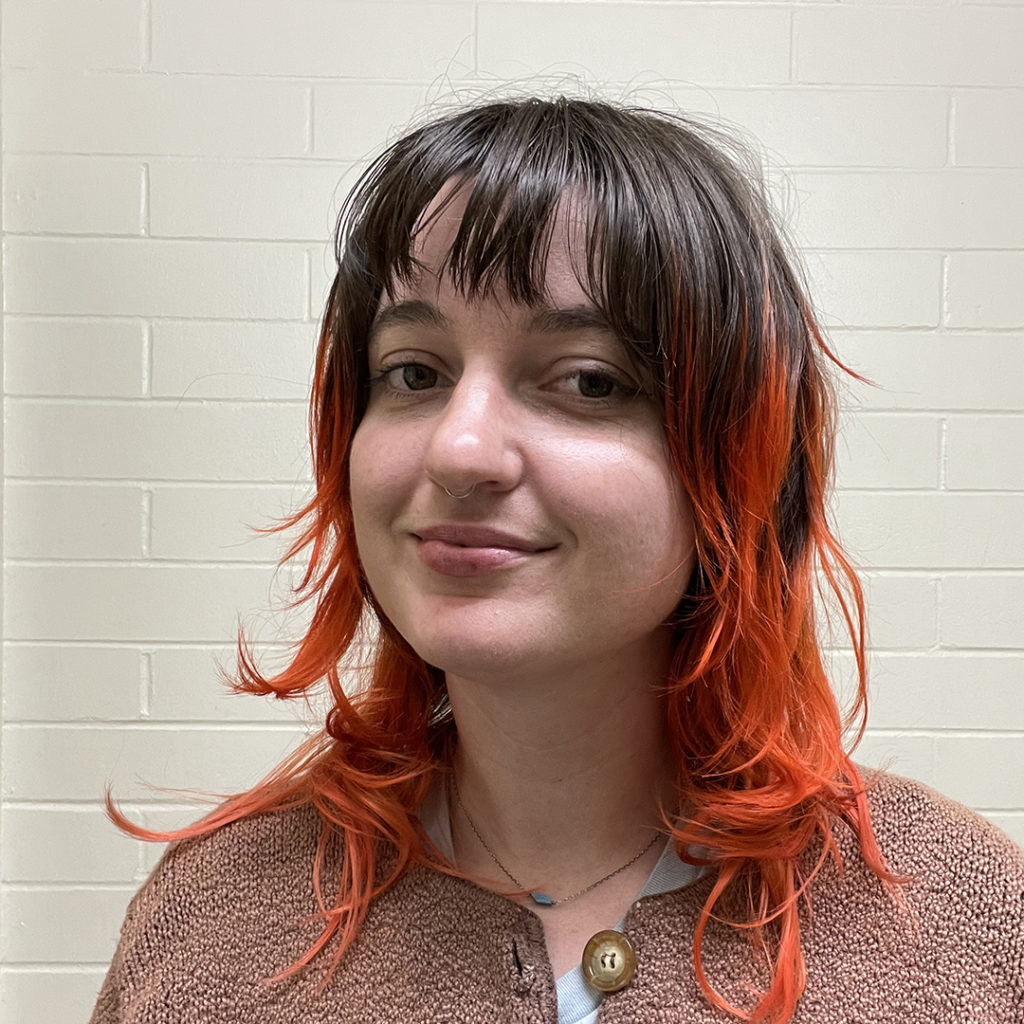
This piece is about a 2,300 acre solar project that has been approved to be built in my hometown that will destroy 4,276 Western Joshua Trees. The project was approved in October 2021, but construction still hasn’t started–the new update is that the US has banned the import of solar panels from China because it is suspected they are built using slave labor, which has interrupted construction (for now). Originally I wanted to find recycled solar panels to print on, but I found these perfect linoleum tiles in the trash I could make to look like solar panels. I wanted to superimpose the image of a Joshua Tree on an image of a solar panel to show that we can not neglect to protect this keystone species in the scramble for “green” energy. I rearranged the tiles to create images reminiscent of the trees being cut down. I titled this piece Keystones to remind us that Joshua Trees are a keystone species, and when they are threatened an entire ecosystem is threatened. There is no reason this solar farm should be built on such a biodiverse stretch of high desert.
Jessica Kwok
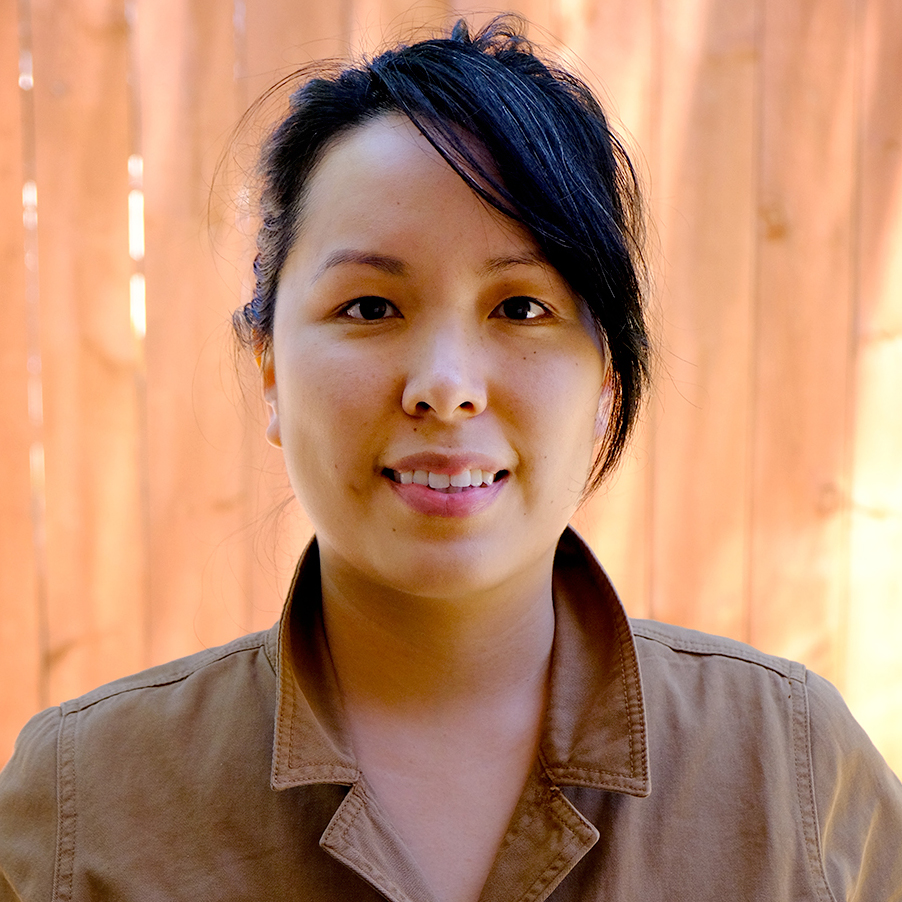
Captured within these three shadow boxes are photographs of styrofoam chunks I found one April day within a short stretch of coastal bramble in Alameda, California. I was fascinated by the resulting organic shapes of an inorganic material produced by the natural application of wind, water, sun and time. Fascination turned to shock when in my effort to remove it, the foam chunks broke into the smaller pieces and were carried away by the breeze like dandelion seeds. Assembled from old styrofoam trays, these shadow boxes invite the viewer to look closer, quite literally in the weeds.
The paper food wrap “flowers” that move through the piece are a reminder of the emotions I felt in the beauty of that day. The discarded paper was sourced from Recology, abandoned for reasons unknown but ready for new life. To my delight, the paper’s square shape brought back childhood memories of folding origami and paper airplanes. Similar to styrofoam, food napkins and paper wraps are another source of wind-borne trash that could be easily addressed by limiting its use and proper disposal.
Michelle Phelps

This story and illustration emerged from the class I took at Laney College in Oakland during the Spring 2022 semester—Eco Art Matters—taught by Sharon Siskin and Minoosh Zomorodinia. Petra Kuppers was the speaker that day, and she led us in an exercise where we connected with our immediate environment and imagined the journey that the natural materials around us took on their way to arriving in our lives. I imagined the tree’s journey to becoming the chair I was sitting on, and this story and illustration were born. The original is part of a hand-drawn book I created to document the material presented in class throughout the semester, in the format of art responses.
Leslie Plato Smith
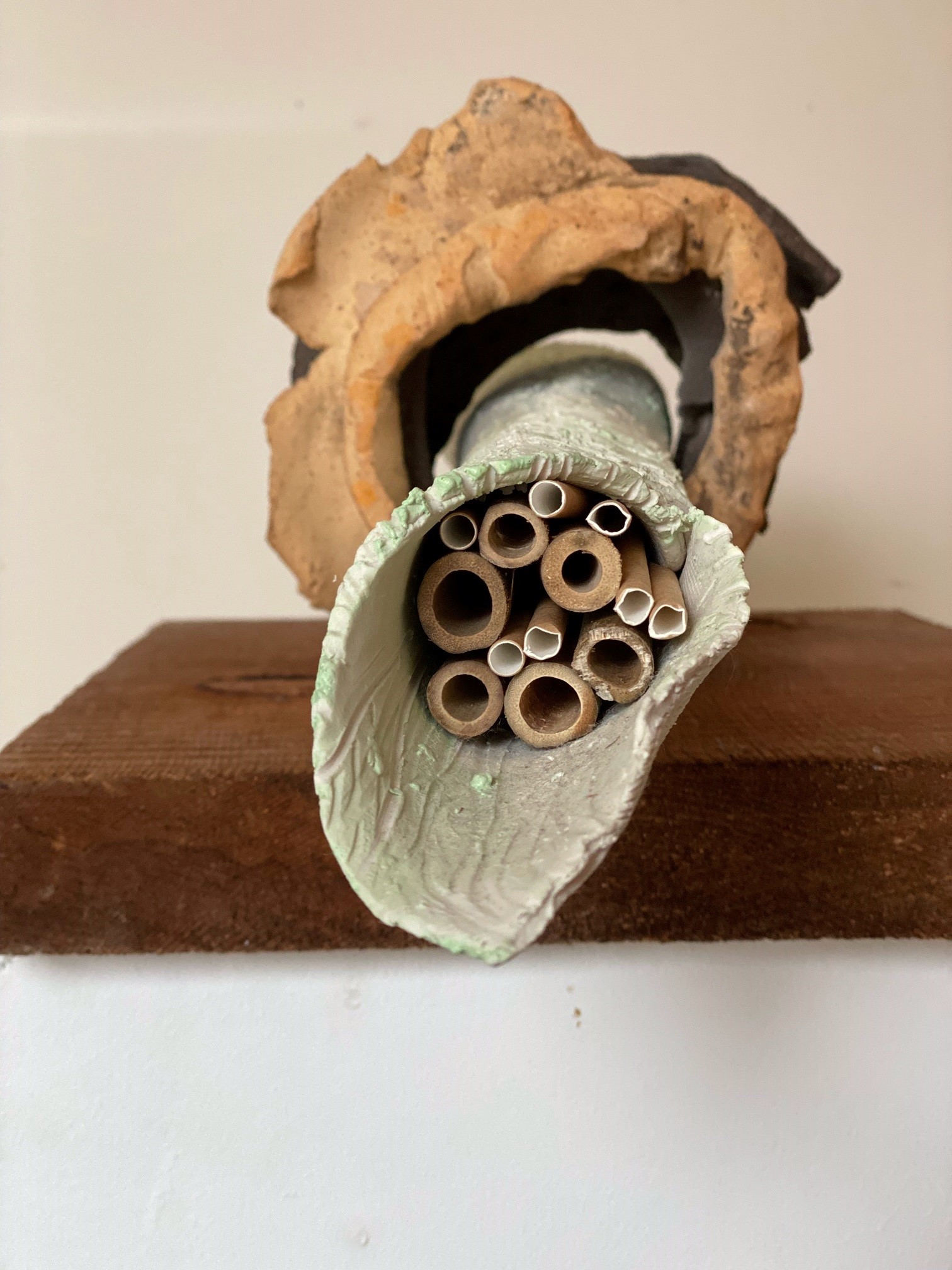
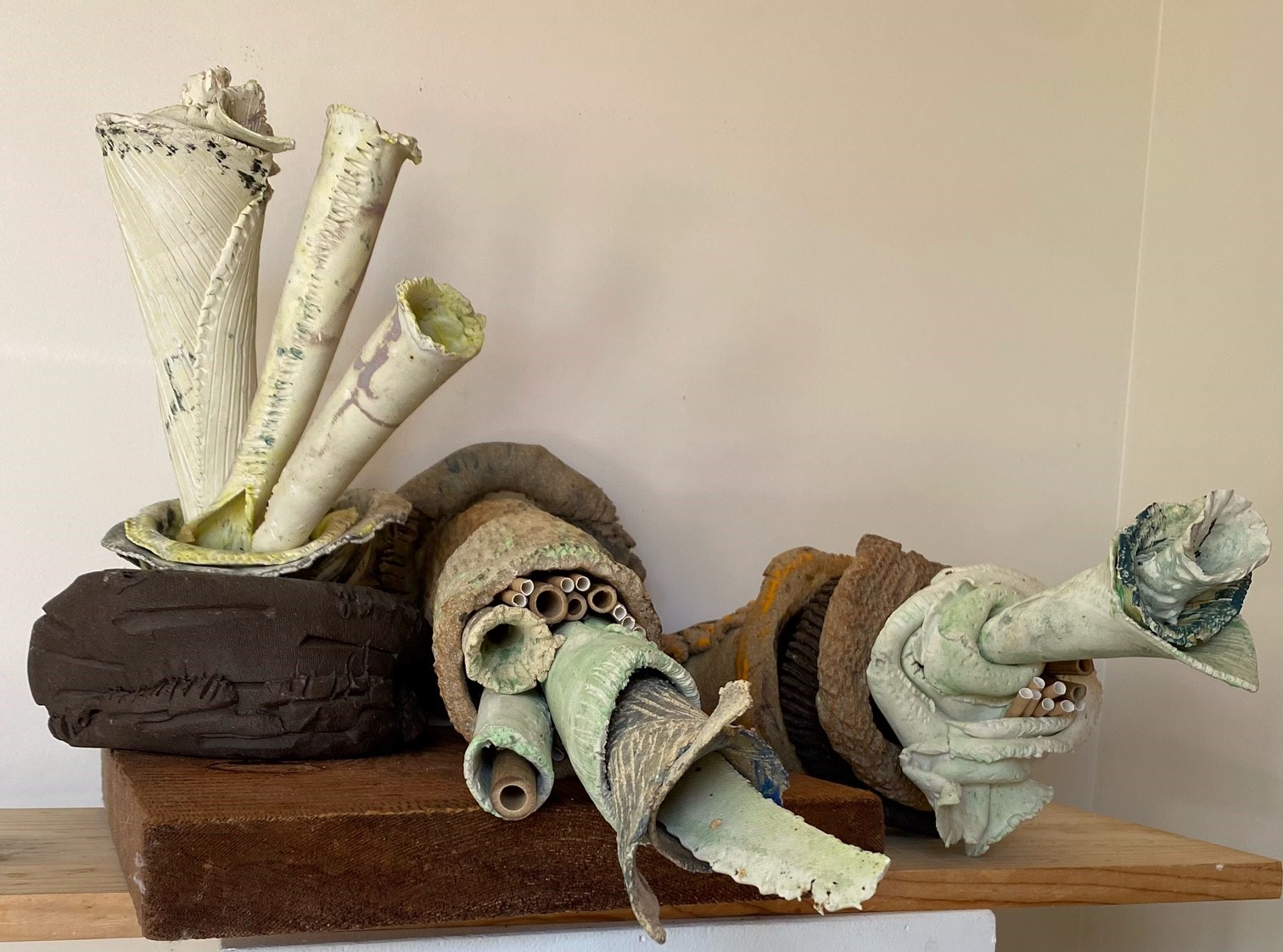
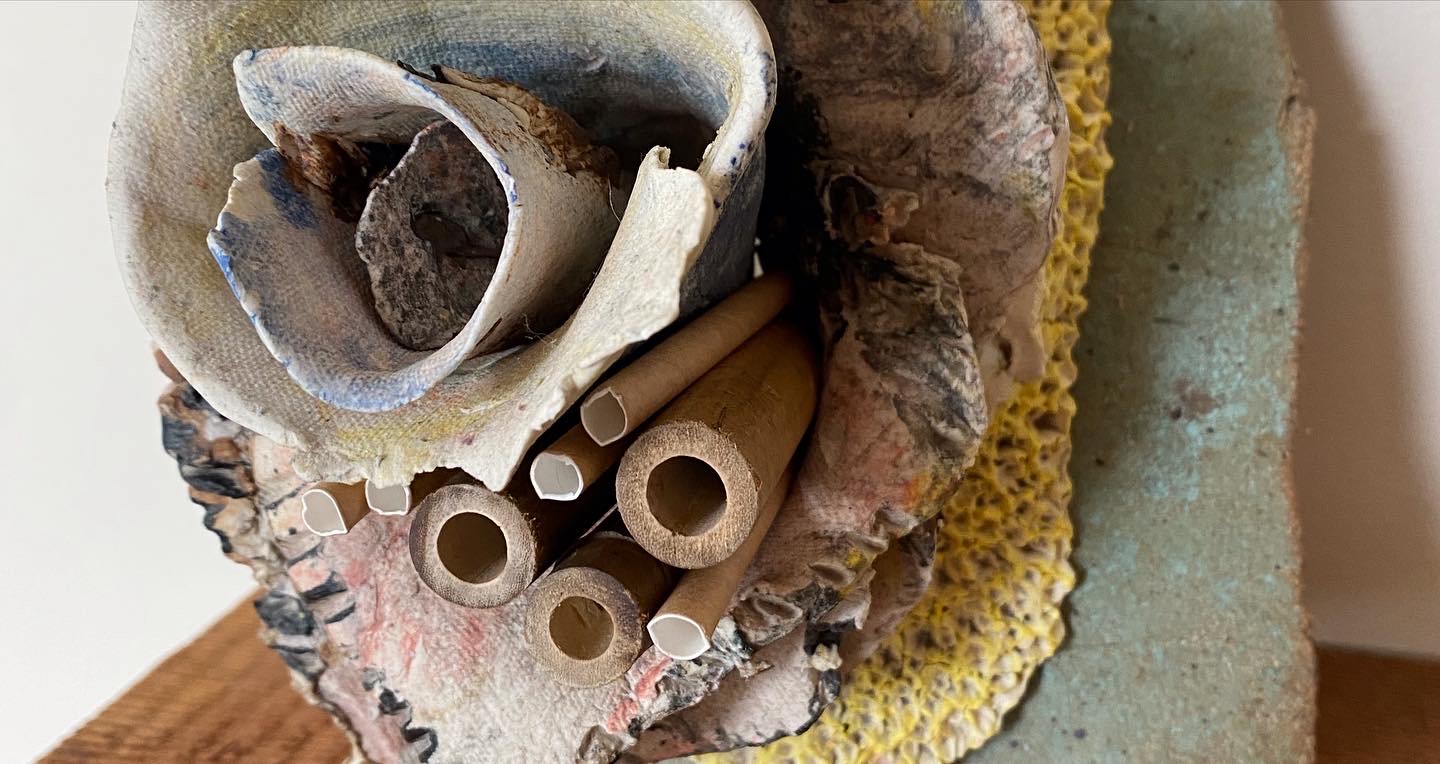
Leslie Smith
Transitions, 2022
ceramic, bamboo, paper
10” x 30” x 10”
Hunger, 2022
ceramic, bamboo, paper
16” x 12” x 17”
Flower, 2022
ceramic, bamboo, paper
6” x 7” x 10”
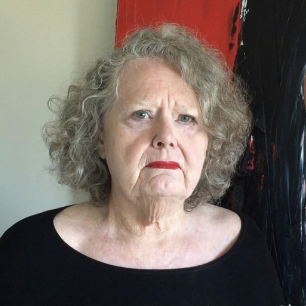
We are in a period of transition; we do not know if for better or worse. I recycled my 2013 sculpture into a house for Native bees because I am deeply committed to ensuring our transition protects, values, and honors Mother Nature, even our smaller members without whom there would be no us.
Flowers, who doesn’t love flowers? Native bees not only depend on their pollen to feed themselves and their young, we would have few flowers without our bee friends.
We are facing historical levels of famine brought on by our own destructive acts. But, it’s not only humans that need to feed, all life needs to eat. We need to promote sustainability for all.
Fall 2021
Lizya Beth du Plessis
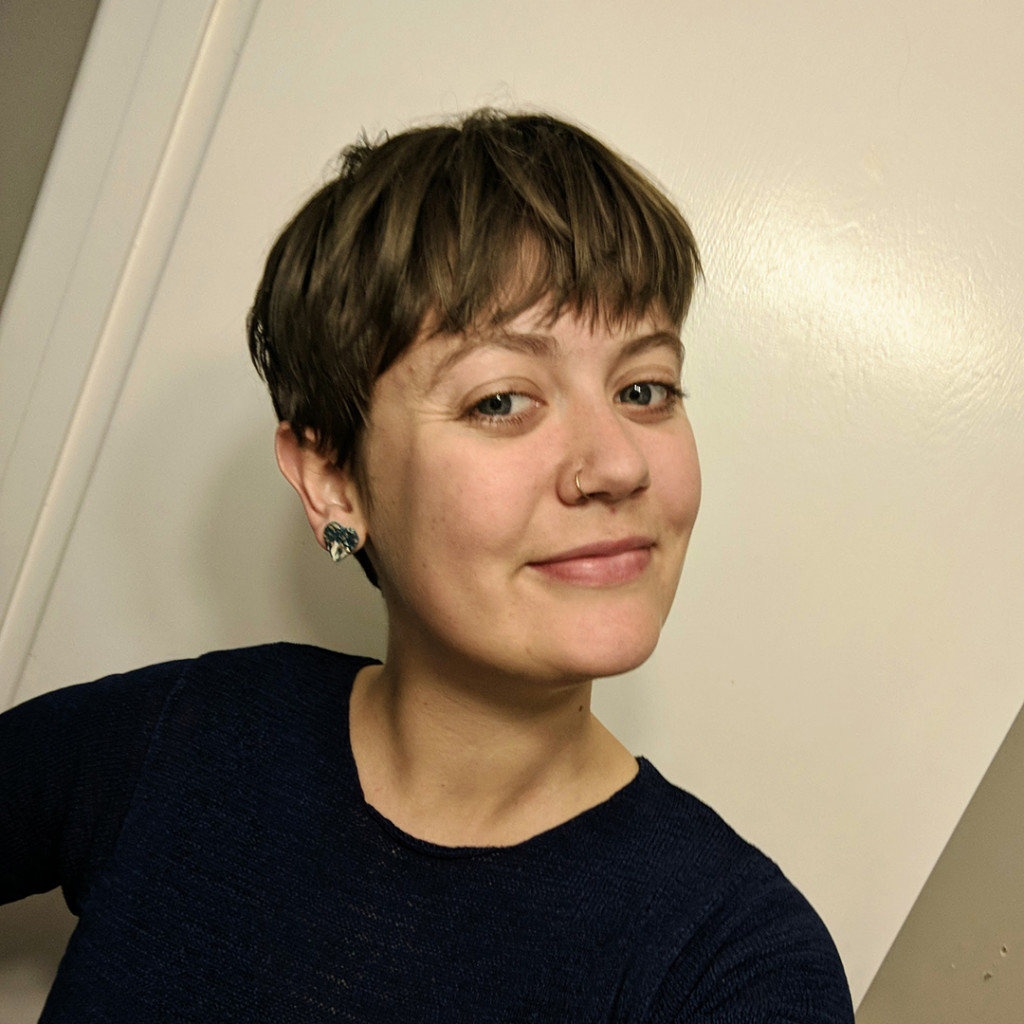
To make a statement about the importance of a diverse planet, and to stop thousands of straws from entering our oceans and landfills, I collected all the straws from the Chabot theater where I work to create this project. The theater agreed to replace these straws with compostable ones! Although this will have a small impact on the overall well-being of our planet, and may cause zero structural change, I hope it will be cause for a conversation.
I strung hundreds of straws onto plastic fishing wire (from Recology) to form a fluid canvas of straws. I then painted a figure embodying the fluidity and queerness of our planet.
The irony of the piece is that it has been formed from the same substance that is robbing us of our fluidity, our queerness, and our diversity; plastic (more largely representing capitalism).
My hope is that the piece will strike up a conversation about its intrigue, its truth, and its obvious impersonation.
Stevie Sokolouski

Stevie Sokolouski
climate chaos comforter, 2021
Cotton and poly-blend fabric remnants, polyester thread
45” x 45”
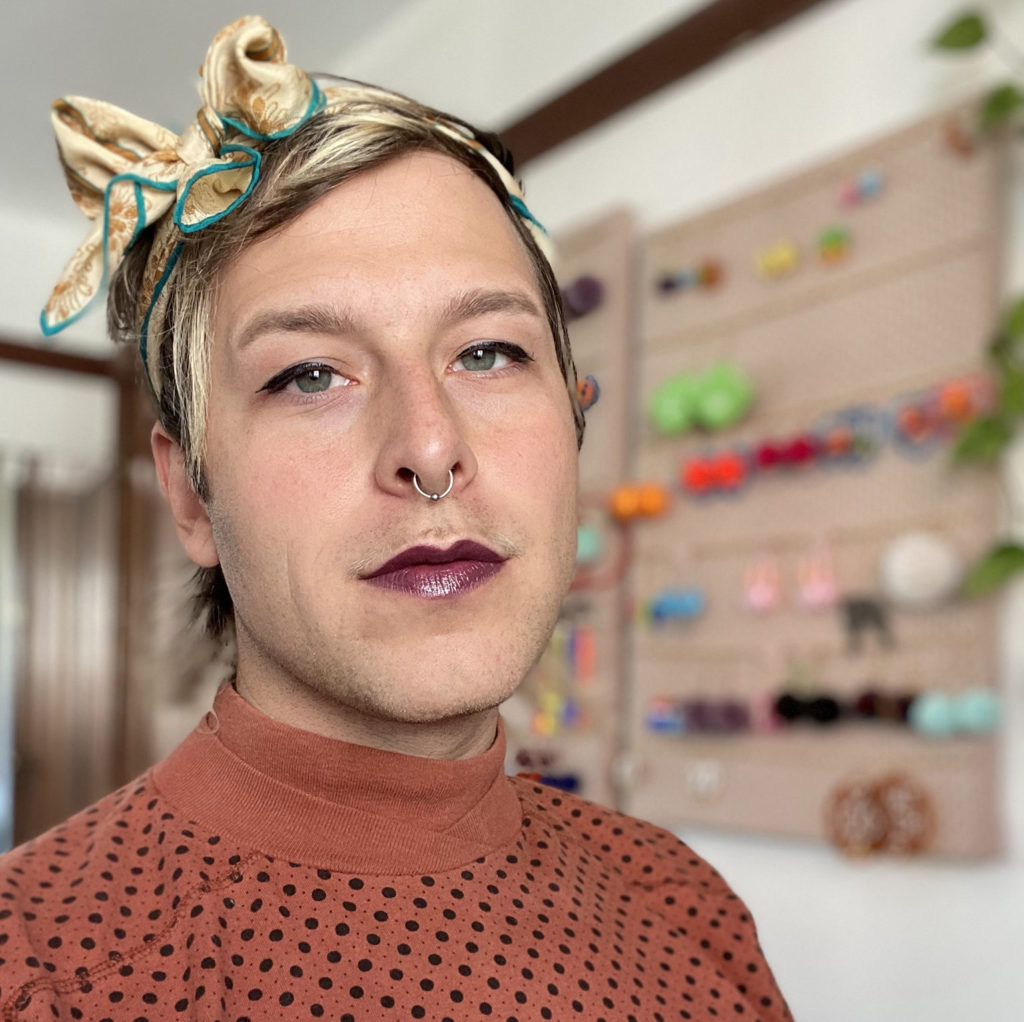
Drawing inspiration from Cleve Jones Names AIDS Memorial Quilt and the improvisational sewing work of Sherri Lynn Wood, climate chaos comforter consists of a series of patches that address the climate chaos being caused by callus consumption, collaging together reclaimed fabrics and remnants from other sewing projects. Climate change is threatening all life on earth, and I want to piece together small scraps to motivate larger systemic change. The patches layer positive messages with negative counterparts, incorporating symbols and icons that relate to the texts. It’s soft to the touch and easy on the eyes, while simultaneously conveying difficult messages that are mitigated by words of hope. It can be read and understood quickly at a distance, but also has layers and details that can be examined close up, leaving the viewer with an image or phrase to meditate on after walking away.
Ruth Tabancay
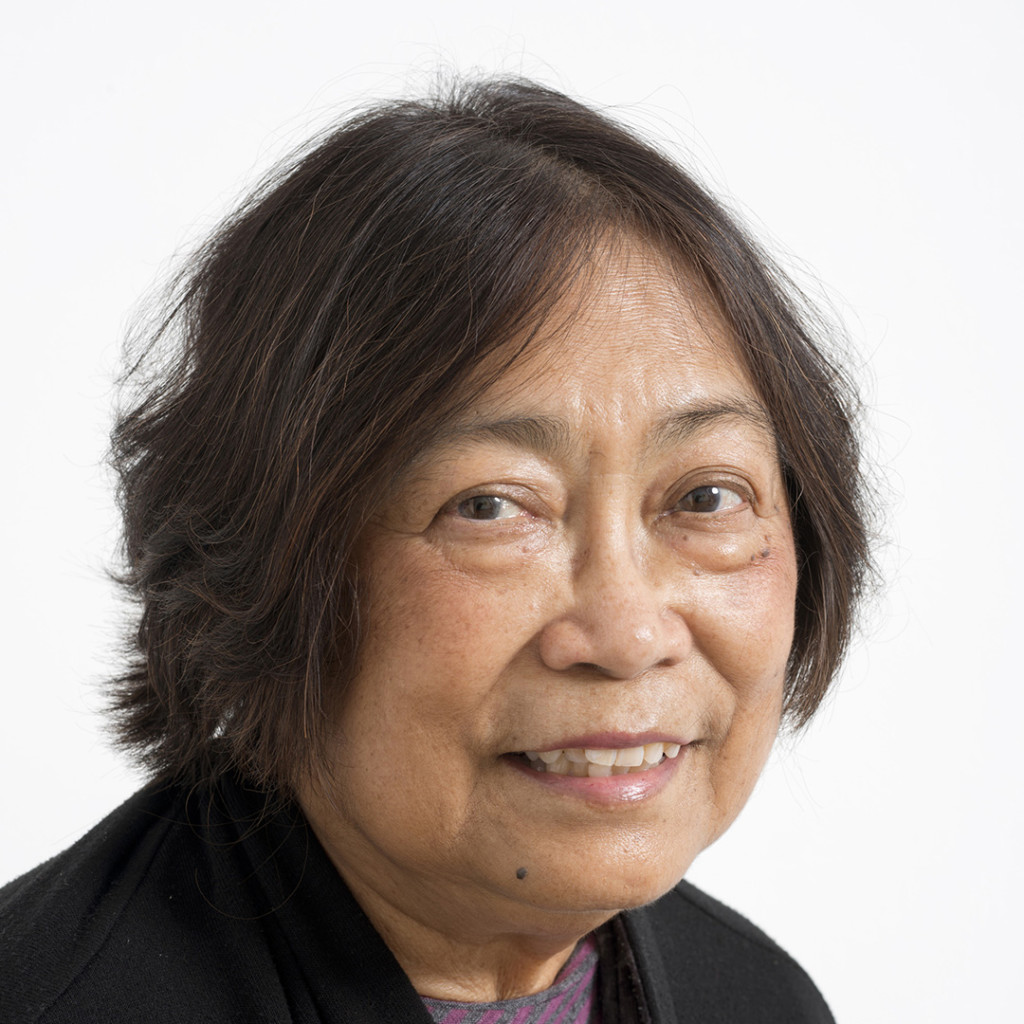
My work illustrates my hope that living forms will evolve to digest plastic. As a former bacteriology major, I have long had images of micro-organisms embedded into my subconscious. The intersection of these two concepts has resulted in my embroidery on various plastics with forms resembling bacteria, fungi, and larvae or maggots.
As we are aware, one of our planet’s major problems is the accumulation of petroleum-based plastics in our environment. Since the 1950’s, more than 8 billion tons of plastic have been produced. As its production far exceeds any means of eliminating it, it becomes a problem for rivers, oceans, lands, wildlife, and our bodies. Even though communities all over offer recycling for various plastics, only #1 PET (polyethylene terephthalate) and #2 HDPE (high density polyethylene) that are actually recyclable. In landfills, a plastic bag can take up to 10-20 years to decompose; a plastic beverage bottle, 450 years, but other kinds of plastic, up to 1000 years; Styrofoam, 500 years to never. As plastics are gradually broken down by mechanical forces, weather, and time, they become microplastics, particles smaller than 5mm. Through inhalation and ingestion, they can enter the human body.
Elsa Trash
Elsa Trash
Discarded Queer Texture Intimacies, 2021
iridescent plastics, gold tinsel, silver tinsel, purple tinsel, pink bubble wrap, painted red and yellow caution tape, over a dozen red and green plastic net bags, a textile and plastic flower, pink, green and black plastic shopping bags, neon green, pink and white tulle fabric, zip ties, shredded paper, found patterned iridescent and fabric, sequins, thread, elastic ribbon, purple lace.
video, 1:39 min.
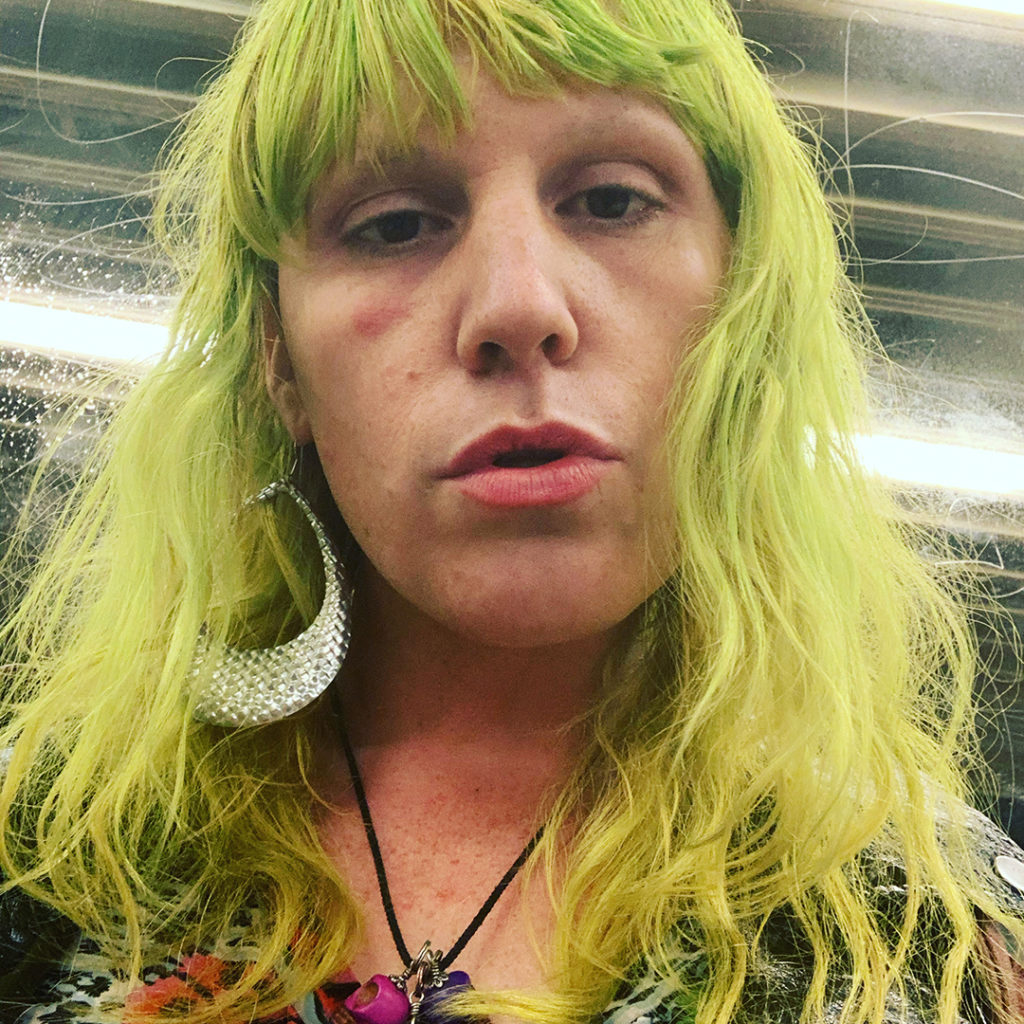
Over the past 4 years I have been collecting plastic and other materials I found on the street and on the floor at queer events. I weave these materials together and use them as a reusable source of art creation. This work explores those materials in intimate detail. The audio in this piece was created by touching the materials with a microphone and layering the sound through effects processors. All equipment used to make the piece was recycled / refurbished.
This piece seeks to invite queer artists to reduce our waste in creative and experimental ways, keeping in mind that:
- 70,000 pounds of trash were left behind during pride 2019.
- In 2021 over 3,000 gallons of trash were left behind in Dolores Park during pride.
- Only 9% of plastics end up being recycled and it takes 400 years for them to degrade.
Edie Wells
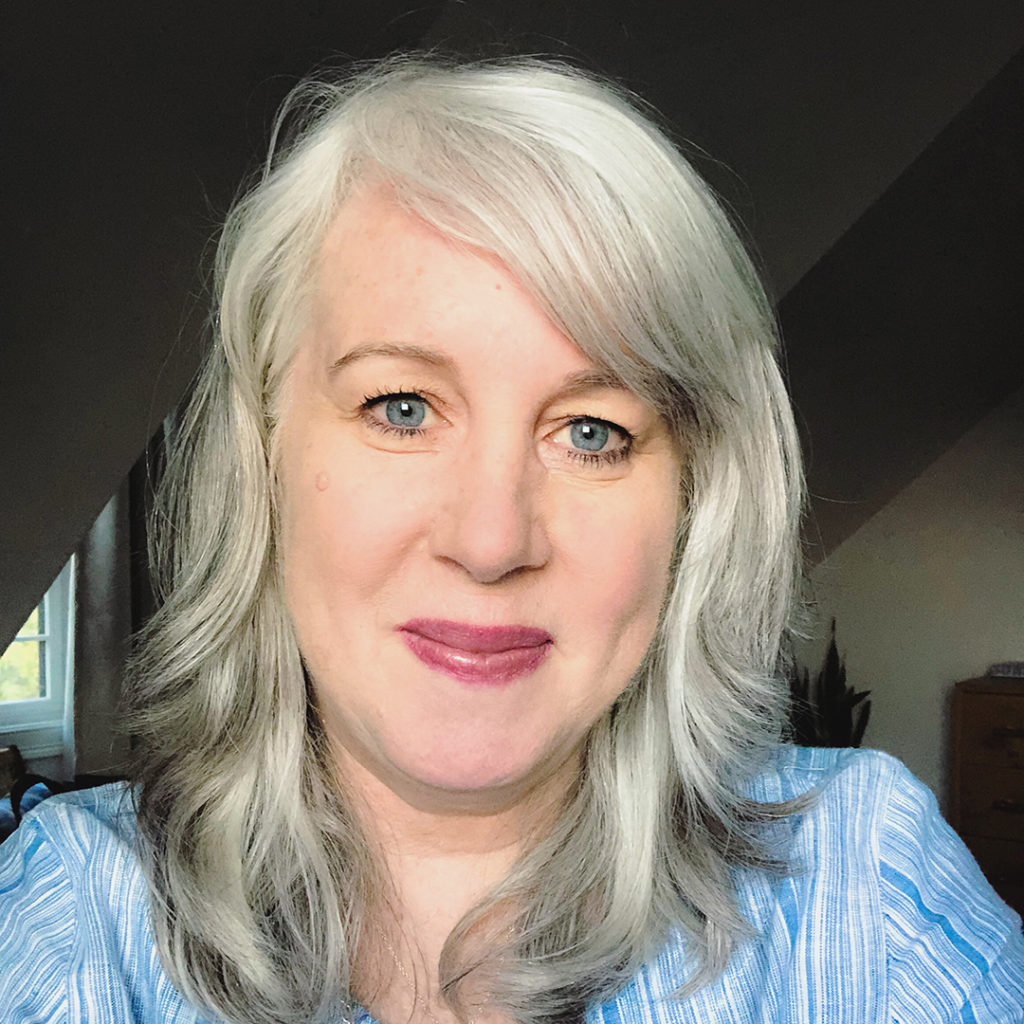
This work aims to incorporate visible mending as a form of protest against fast fashion while also honoring the memory of my mentor, Dan Phillips. These jeans belonged to Dan and were worn on the job sites where he built houses out of recycled materials. As a kindred spirit and mentor in concern for the reckless amount of consumption and waste being created on the planet, Dan mended many lives. His recycled houses provided affordable homes to low income people, and his building company provided income, job skills, and mentorship to many crew members. His company, the Phoenix Commotion, inspired by the mythological phoenix rising from the ashes, inspired the flames I embroidered on the jeans. I used a bandana belonging to Dan to mend the worn places, and intentionally placed the McCoys logo in one section. McCoys is a local building supply company that had a long-time relationship with Dan, often donating inventory to him to avoid throwing it away. Dan Phillips passed away on the Winter Solstice, Dec 21, 2021, after a long battle with cancer. He was a remarkable person, and I am a profoundly better human because of having known him as a mentor and friend.

